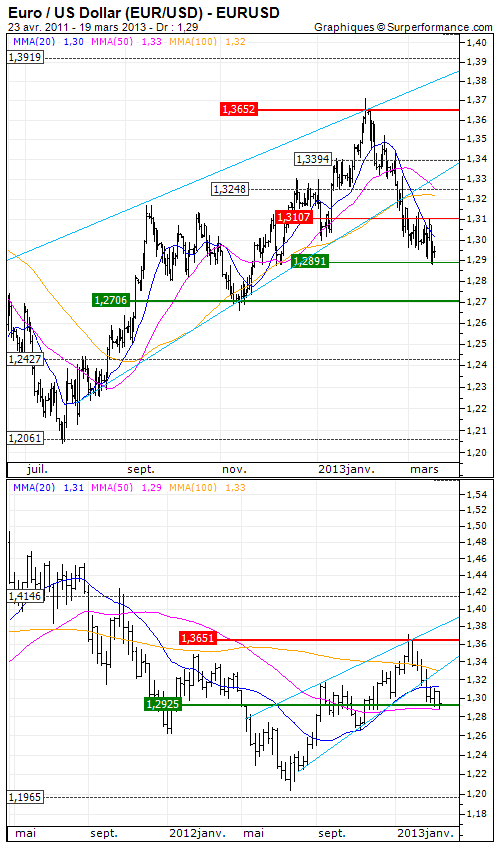Euro / US Dollar (EUR/USD) : Back to the reality
By Mathieu Burbau
Unemployment reached a new record in the Eurozone (11.9%) where the economy confirms its new contraction at the fourth quarter (-0.6%). The European Commission and the ECB even revised downward their growth estimates for this year whereas the activity of the world’s largest economy shows signs of strength.
The United States had, among other things, not seen such good labor market since 2010 (7.7%) and many Federal Reserve leaders took the opportunity to advocate a strategy for exiting from the very accommodative measures established by the institution.
Even if, it does not seem imminent due to the fiscal cliff that the country faces, the greenback benefits also from its safe haven status after the Italian parliamentary elections, which failed to reach a clear majority, and the announcement of a new and worrying tax on Cypriot bank deposits in exchange of an international aid of 10 billion euros.
Finally, the last G20 communiqué publish in mid-February about competitive devaluations had also allowed to limit speculations about a potential currency war, the origin of the strong appreciation of the euro.
Graphically, in weekly data, the European currency successively passed under its trend line and its 20-period moving average to come back on the 50-week moving average. Thus, prices could now move horizontally in the coming days, just the time for traders to accept the comeback of the Euro below USD 1.30, threshold which seems to regularly polarize trades.





